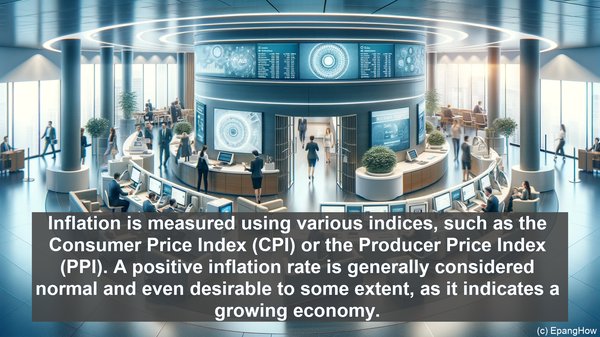Introduction: The Importance of Inflation Rate and Interest Rate
Hello everyone! In today’s article, we’re going to dive deep into the world of economics, specifically focusing on two fundamental concepts: inflation rate and interest rate. While both of these terms are often mentioned in financial discussions, they represent distinct aspects of the economy. Understanding their differences is crucial for making informed decisions, whether you’re an investor, a borrower, or simply someone who wants to stay updated on economic trends.
Defining Inflation Rate: The General Rise in Prices
Let’s start with inflation rate. In simple terms, it refers to the rate at which the general level of prices for goods and services is rising, and, subsequently, the purchasing power of currency is falling. Inflation is measured using various indices, such as the Consumer Price Index (CPI) or the Producer Price Index (PPI). A positive inflation rate is generally considered normal and even desirable to some extent, as it indicates a growing economy. However, when inflation becomes too high or too low, it can have significant consequences.
Understanding the Impact of Inflation
Inflation affects various aspects of the economy. One of the most immediate impacts is on the cost of living. As prices rise, the same amount of money can buy fewer goods and services. This can put a strain on households, especially those with fixed incomes. Inflation can also affect businesses, as their costs increase, potentially leading to reduced profitability or the need to raise prices. Additionally, inflation can influence interest rates, which we’ll explore in more detail shortly.

Exploring Interest Rate: The Cost of Borrowing or the Return on Investment
Now, let’s turn our attention to interest rate. This term refers to the cost of borrowing money or the return on investment. When you borrow money, such as taking out a loan or using a credit card, you’re typically charged an interest rate. This rate represents the additional amount you need to pay back to the lender as compensation for their risk and the time value of money. On the other hand, if you’re an investor, an interest rate represents the return you can expect on your investment, such as when you purchase a bond.
The Role of Central Banks in Setting Interest Rates
In most countries, the central bank plays a crucial role in determining interest rates. Through various monetary policy tools, such as adjusting the benchmark interest rate or open market operations, central banks aim to influence borrowing costs and, consequently, economic activity. Lowering interest rates can stimulate borrowing and spending, while raising them can have the opposite effect, potentially curbing inflation. Central bank decisions regarding interest rates are closely watched by financial markets and can have far-reaching implications.
The Interplay Between Inflation Rate and Interest Rate
Here’s where things get interesting. While inflation rate and interest rate may seem like separate concepts, they are interconnected. In fact, they often have an inverse relationship. When inflation is high, central banks may raise interest rates to cool down the economy and prevent prices from spiraling out of control. Conversely, when inflation is low, central banks may lower interest rates to encourage borrowing and spending, thus stimulating economic growth. This delicate balancing act is a key part of monetary policy.

Implications for Individuals and Businesses
For individuals, the interplay between inflation rate and interest rate can have both positive and negative effects. On one hand, low inflation can mean stable prices and a relatively lower cost of living. On the other hand, it can also mean lower returns on savings and investments. Conversely, high inflation can erode the value of money, but it may also lead to higher interest rates, potentially benefiting savers. For businesses, understanding these dynamics is crucial for financial planning, pricing strategies, and investment decisions.
